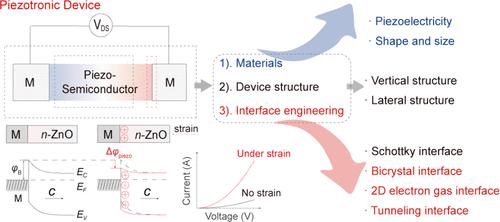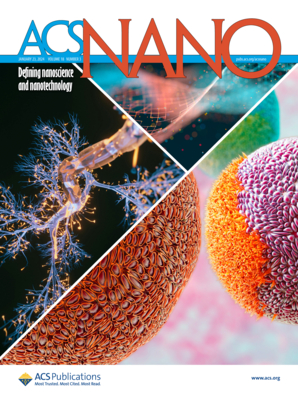High-Performance Piezotronic Devices
IF 15.8
1区 材料科学
Q1 CHEMISTRY, MULTIDISCIPLINARY
引用次数: 0
Abstract
The interface phenomena and regulation mechanisms of semiconductor devices are crucial for their applications in the fields of electronics and optoelectronics. The piezotronic effect utilizes the strain-induced piezoelectric polarization at interfaces to regulate the interface energy band and carrier transport, so that the response current of the piezotronic device can change exponentially with small changes of stress/strain, showing high sensitivity. In recent years, in-depth studies of piezotronic effect regarding material, structure, and interface have largely enhanced the piezotronic device’s performance; these investigations can also provide guidance for emerging interface engineering by polarizations like the flexotronic effect. This paper reviews the establishment and development of piezotronics and focuses on the latest research achievements in the field regarding material modification, structural design, and interface engineering, so as to provide guidance for the investigation and development of high-performance piezotronic devices. In the end, the paper points out the current challenges of piezotronic devices in practical applications and gives some outlooks for future development in this field.

求助全文
约1分钟内获得全文
求助全文
来源期刊

ACS Nano
工程技术-材料科学:综合
CiteScore
26.00
自引率
4.10%
发文量
1627
审稿时长
1.7 months
期刊介绍:
ACS Nano, published monthly, serves as an international forum for comprehensive articles on nanoscience and nanotechnology research at the intersections of chemistry, biology, materials science, physics, and engineering. The journal fosters communication among scientists in these communities, facilitating collaboration, new research opportunities, and advancements through discoveries. ACS Nano covers synthesis, assembly, characterization, theory, and simulation of nanostructures, nanobiotechnology, nanofabrication, methods and tools for nanoscience and nanotechnology, and self- and directed-assembly. Alongside original research articles, it offers thorough reviews, perspectives on cutting-edge research, and discussions envisioning the future of nanoscience and nanotechnology.
 求助内容:
求助内容: 应助结果提醒方式:
应助结果提醒方式:


